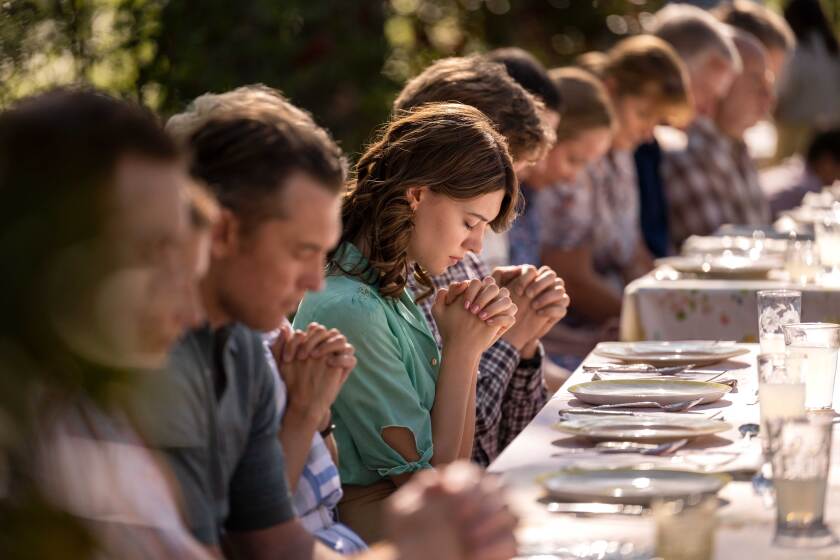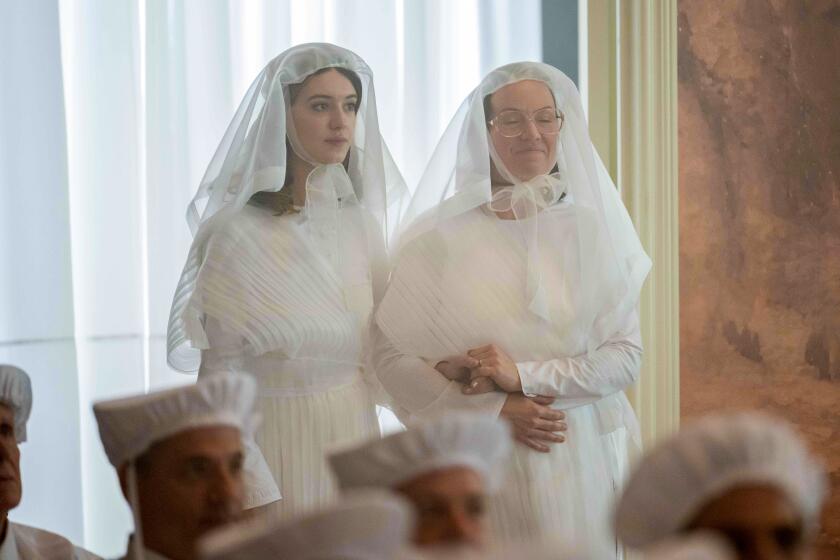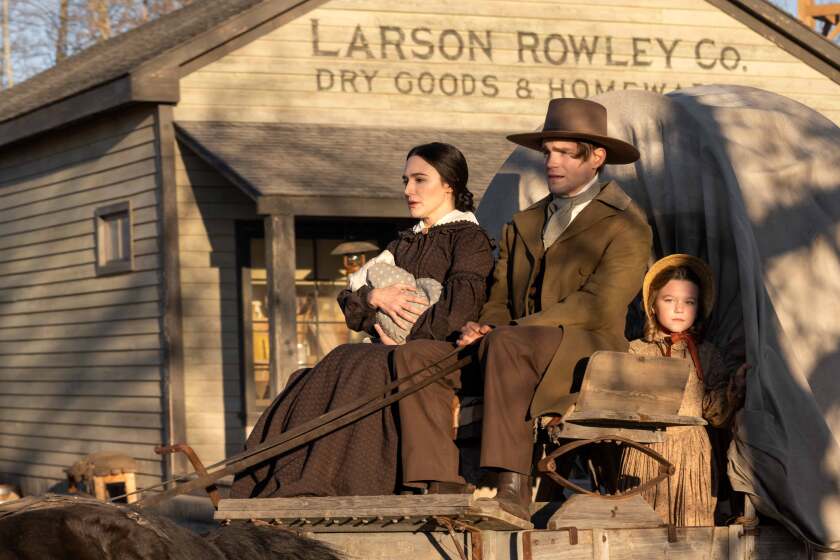Church members decry TV portrait of Mormon life: ‘It’s designed to make us look alien’
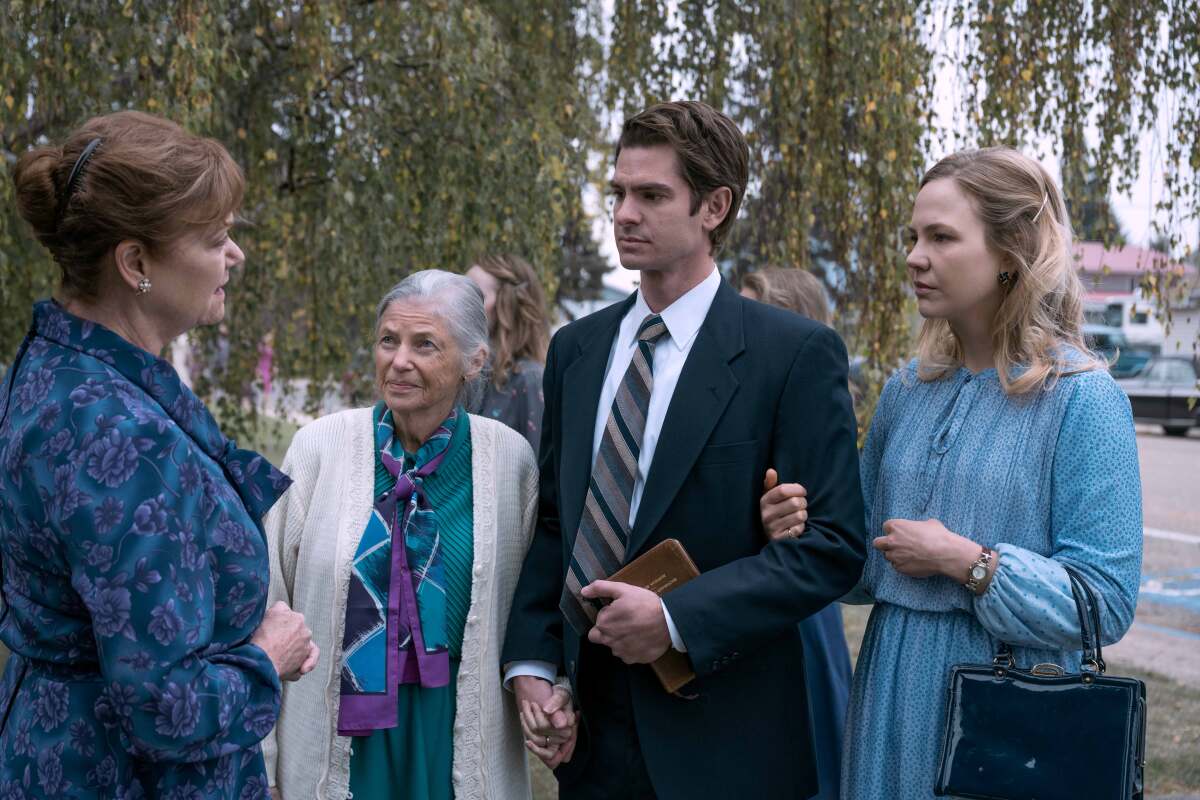
- Share via
“Under the Banner of Heaven” follows Det. Jeb Pyre, a devout member of the Church of Jesus Christ of Latter-day Saints, as he tries to understand what led two brothers in 1984 Utah to commit a brutal double murder they claimed was inspired by divine revelation.
The case becomes both a spiritual and a criminal investigation for Pyre (Andrew Garfield), who is forced to confront the faith in which he was raised and the darker episodes in its past, portrayed through historical flashbacks. Though he never decisively breaks with the church, by the end of the series it is clear he has grown disillusioned with the beliefs that once anchored his life.
The Hulu series, which concluded Thursday, is based on Jon Krakauer’s nonfiction bestseller, which uses the real-life murder of Brenda Lafferty and her infant daughter to delve into the turbulent history of the Mormon religion. But Pyre is a fictional character created by showrunner Dustin Lance Black — himself a former member of the church — to tie together the disparate strands of the narrative.
“Banner” has struck a chord with others who’ve left the faith and see themselves in Garfield’s spiritually conflicted family man and in Brenda (Daisy Edgar-Jones), the vivacious young mother murdered by her husband’s deranged brothers, who had strayed from mainstream Mormonism into belligerent fundamentalism.
In ‘Under the Banner of Heaven,’ based on the book by Jon Krakauer, Dustin Lance Black delivers an unflinching portrait of the faith he grew up in.
In certain corners of social media, including #exmormon TikTok and Reddit, users have praised the series for its capturing the everyday details of Latter-day life as well as the “existential sense of what it means to experience the world through Mormon eyes,” as self-described “ex-believer” Nadine Smith wrote in GQ. (The leaders of the Church of Jesus Christ of Latter-day Saints discourage use of the term “Mormon” and the abbreviation, LDS, though both terms are still commonly used by the general public and by some members of the faith.)
But many active Latter-day Saints, even some who have been publicly critical of the church, feel that the series maligns their faith and misrepresents key moments in its history, all in service of the troubling idea, as one character puts it, that Mormonism “breeds dangerous men.” (They also have a host of more granular criticisms about nuances such as the frequency with which characters say “Heavenly Father.”)
“For us, saying ‘Under the Banner of Heaven’ is representation for Latter-day Saints is kind of like saying ’24’ was representation for the Islamic community,” said C.D. Cunningham, managing editor of Public Square magazine, a publication that examines culture and current events from a Latter-day Saints perspective but does not have official ties to the church.
“This is not what representation looks like. This is not helping people understand who we are as a people or getting that message out. It’s designed to make us look alien and outsider,” he added.
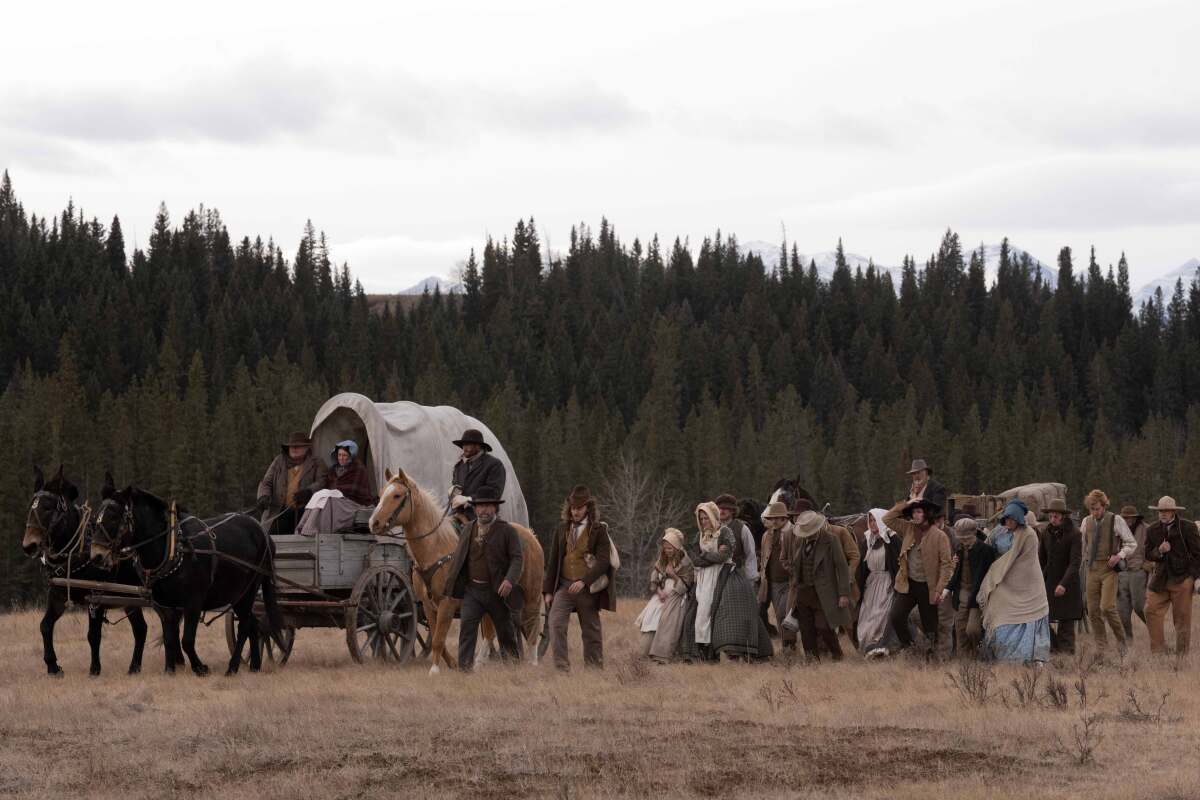
When Krakauer’s book was released in 2003, the church issued a forceful renunciation, calling it “not only a slap in the face of modern Latter-day Saints, but also a misunderstanding of religion in general.” But it did not stop “Under the Banner of Heaven” from becoming a bestseller and one of the most widely read books on the Mormon faith.
The church has not officially commented on the series since it debuted in April, but David Bednar, a member of the governing body the Quorum of the Twelve Apostles, recently suggested it was part of a long pattern of discrimination and misunderstanding.
“We have been mischaracterized since 1830, when the church was established,” he said during an event last month at the National Press Club. “I don’t think it will ever go away.”
These perceptions are especially frustrating because of how the church has evolved since it was formed nearly two centuries ago, said Jana Riess, a senior columnist for Religion News Service who is an active Latter-day Saint (though also one who sometimes “pushes the boundaries of Orthodoxy” in her writing.)
She feels that although “Banner” did a good job distinguishing between the mainstream church and its fundamentalist offshoots, it did not account for the church’s dramatic transformation over the last two centuries.
“The series is trying to say that all of the violence that pertained in those really tumultuous times [in the 19th century] is still just lurking under the surface for ordinary Latter-day Saints. And that thesis is very problematic,” she said, describing the series as “agenda-driven. Black was trying to make a point, again and again, in an unsubtle way, that Mormonism is violent.” (By contrast, Riess once wrote a positive review of the irreverent Broadway musical “Book of Mormon” because “it started from the premise that Mormons are not killers.”)
“Everybody wants to believe we’re not as boring as we actually are,” she said.
Through insider sources and meticulous research, Hulu’s ‘Under the Banner of Heaven’ sheds light on aspects of church life rarely seen by outsiders.
In an interview Friday, Black said he had received a flood of messages, largely positive, from people who said the series made them “feel less alone in their questions, less alone in their concerns, which is the goal of this for me.”
He also addressed the criticisms leveled at the show by current members of the church — particularly the suggestion that he paints Mormonism as inherently violent.
“I’m not saying that it breeds exclusively dangerous men,” he said, “but there is something in teaching little boys that this patriarchal structure is God-ordained and lasts into the afterlife, and gives them that power over women. That can create dangerous men, if you blur the lines between selfish desire and the voice of God.”
“I don’t think most Mormons are violent; most are not, thank goodness,” Black said. “But I’m not talking about physical violence. I think if you’re participating in a patriarchal structure that harms women, you might not realize the violence you’re helping perpetrate.”
Riess, though, was particularly bothered by a scene in the finale in which Brigham Young (Scott Michael Campbell), who took over the church after the murder of founder Joseph Smith, declares that if any “gentile” — or non-Mormon — enters their territory “we must make an example of him.” A militia of Latter-day Saints then slaughters dozens of settlers who have just arrived in Utah, a notorious incident that took place in September 1857 and came to be known as the Mountain Meadows Massacre.
“There’s a distinction between arguing that the church tried to cover up the Mountain Meadows Massacre, which is well-supported by extensive historic documentation, and arguing, without evidence, that Brigham Young ordered it,” she said. “It is really improbable that he ordered the massacre, and yet, the the series just treats that as a fait accompli.”
But, Black pointed out, Young is not present at the massacre, nor does he explicitly order the attack. And his use of fiery rhetoric in the period preceding the attack is well-established. Black cites a quote from Young, dated August 1857, in which he urged his congregation to “take up the sword and fight the Gentile.”
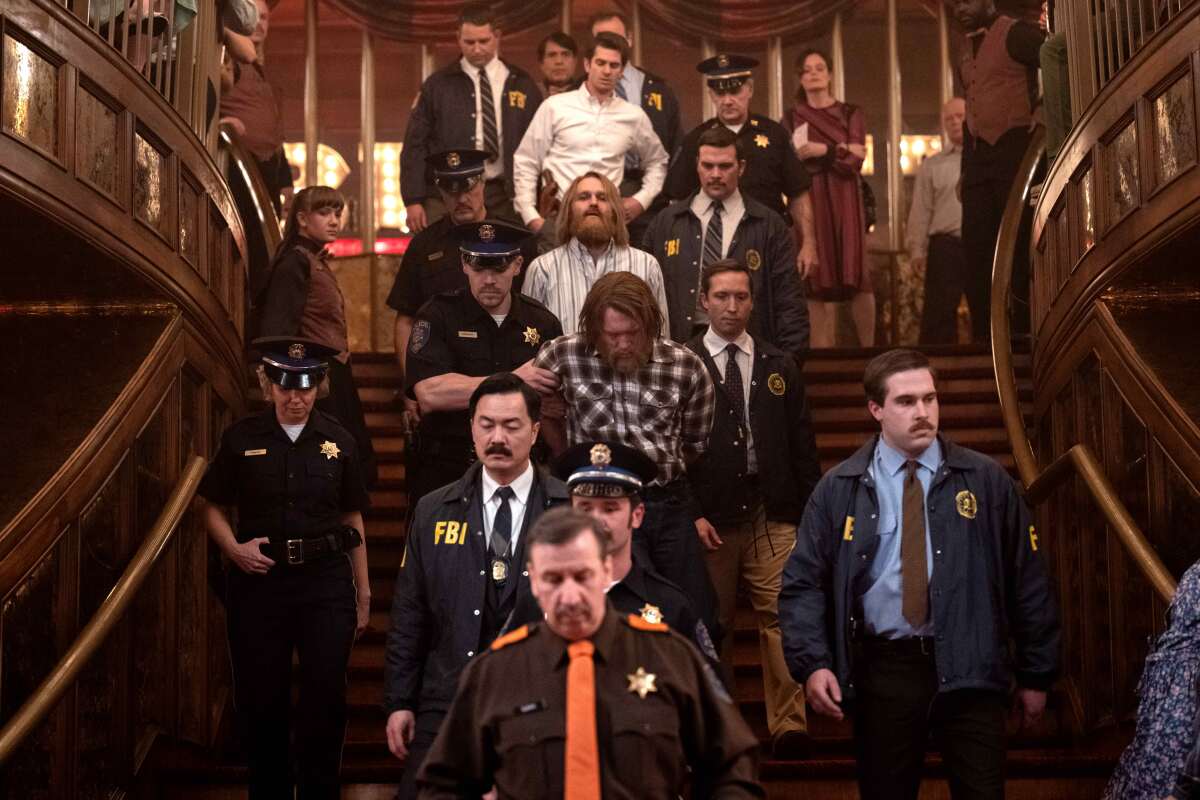
“This is not a man afraid of shedding blood,” Black added.
To Liz Busby, a critic who has written about “Under the Banner of Heaven,” Pyre’s spiritual crisis rang hollow. “The second he hears anything that contradicts the easiest version of his faith, he gives up,” she said. The series, in her estimation, “didn’t include any of the good parts of the tradition. There’s literally nothing that shows why any of us want to stay.” (In contrast, she praised an episode in the latest season of “Stranger Things” that portrayed the “loving chaos” of a large Latter-day Saint family.)
In her view, the series also exaggerated the pressure Mormon women are under to inhabit traditional domestic roles and blindly support their “priesthood holders” — their husbands. “That’s not how I have ever seen it framed,” said Busby, who was born in the 1980s. “There has been a change in messaging over time. That’s the unfortunate thing about making a show that’s set 40 years in the past. No one wants to be represented by the 40-year-old version of themselves.”
The show’s depiction of the temple endowment ceremony was similarly frustrating to some viewers. Not only did it portray a sacred ritual that is typically closed to outsiders — a fact that many Latter-day Saints found inherently disrespectful — it also emphasized aspects of the sacred rite that have since been eliminated: a menacing throat-slicing gesture symbolizing the penalties faced by anyone who broke their covenant with God, and the anointing of the naked body, including intimate areas, with oil.
The detective story is also a period piece tracing Latter-day Saints history and the journey of founding prophet Joseph Smith. Here’s how they did it.
“Treating the sacred rites and ordinances of any religion that way is inappropriate, but also they left out all context,” said David Snell, host of the YouTube channel Saints Unscripted, where he explains the church and its teachings in an accessible manner. As he noted, the penalties were eliminated from the endowment ceremony in 1990, and people are now anointed on their head only, while clothed.
“They honed in on the specific things that made people the most uncomfortable in the past — and justifiably so — and those are the exact same things that have since been changed,” Snell said. “It’s like saying, ‘Hey, look at these things that are so weird, that no longer apply, but we’re not going to tell you that they no longer apply.’”
For his part, Black considers the series a challenge to the dominant narrative church members are taught.
“You can nitpick,” he says. “But it doesn’t make the problems go away. Until Mormons show the courage to look into their own shadows, the church will not improve.”
More to Read
The complete guide to home viewing
Get Screen Gab for everything about the TV shows and streaming movies everyone’s talking about.
You may occasionally receive promotional content from the Los Angeles Times.
